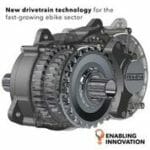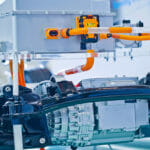It is very unlikely that you will use a piece of technology from 100 years ago, such as a typewriter or a gramophone, in everyday life. However, a town in California has hit the headlines for doing just that. Could manufacturers learn a lesson from holding on to older technology? Here Jonathan Wilkins, marketing director of industrial obsolete parts supplier EU Automation, discusses how new technology can bring legacy equipment into the fourth industrial revolution.
The Centennial Light in Livermore, California was first turned on in 1901 and now holds a Guinness World Record for the longest burning lightbulb.
While manufacturers may not use equipment as old at the Centennial Light, most facilities rely on older equipment to complete production. This legacy equipment is built to last, so manufacturers may find that they are using machines that are 20 to 30 years old, even though they are no longer manufactured by the original equipment manufacturer (OEM).
Legacy equipment is vital to production as it allows but also prevents manufacturers from realising Industry 4.0 and remaining competitive in industry. It is a common misconception that manufacturers have to purchase new and expensive equipment to build the factory of the future. Instead of purchasing this equipment, manufacturers should consider how they can modernise legacy equipment to make it Industry 4.0 ready.
Give your equipment a voice
Machine to machine (M2M) communication is one of the main ways that manufacturers can realise Industry 4.0. Newer pieces of equipment connect via the Industrial Internet of Things (IIoT) to enable this communication, that can help to streamline production. Manufacturers may find that legacy equipment does not have the ability to communicate with other machines, making it difficult for manufacturers to update processes.
To prevent this, Red Lion released the Data Station Plus, that can enable communication and help manufactures collect and manage all of their data. It connects the gap between disparate serial, Ethernet and fieldbus devices to unlock information from PLCs, drives, motion controllers and more.
With this device, manufacturers can invest in any machine, either, new reconditioned and obsolete from any OEM and do not have to worry that it will not integrate with the rest of the facility.
Work smarter
Basic motor technology has not changed over the last 100 years, so manufacturers rarely need to invest in newer models. Motors are a notoriously simple technology, so manufacturers may be tempted to think that theirs will run without a hitch. However, they are also one of the most energy-intensive pieces of equipment on the factory floor, so they need to be running as efficiently as possible.
To enable the predictive maintenance of motors, manufacturers can purchase the ABB Ability Smart Sensor. Manufacturers can place these sensors on the motor to convert it into a smart wireless connected device that report on vibration, temperature and other parameters. Maintenance engineers can use this information to plan maintenance according to machine condition rather than carrying it out at regular and unnecessary intervals, reducing expensive downtime.
Orange is the new black
Manufacturers can find it difficult to access data from legacy equipment as it wasn’t manufactured with Industry 4.0 in mind. However, manufacturers can purchase equipment that brings their legacy equipment up to date and helps them avoid replacing their entire system. B&R’s Orange Box, for example, can read machine data from older equipment without changing any of its hardware or software. With this information, manufacturers can see the performance metrics of legacy equipment and identify the changes to make to maintenance or Overall Equipment Effectiveness (OEE) to improve efficiency across the production line.
With these technologies, manufacturers can optimise the equipment they already have in the factory to realise Industry 4.0. As they collect more information on machine condition and efficiency, maintenance engineers can implement a preventative maintenance programme to anticipate breakdowns. Then, they can contact an obsolete parts supplier to source and replace legacy equipment before it impacts production.
While you may not find century old equipment in a facility, obsolete technology from the last few decades can play a large part in Industry 4.0. Manufacturers should invest in equipment that can convert any older equipment to intelligent devices that can easily communicate.








